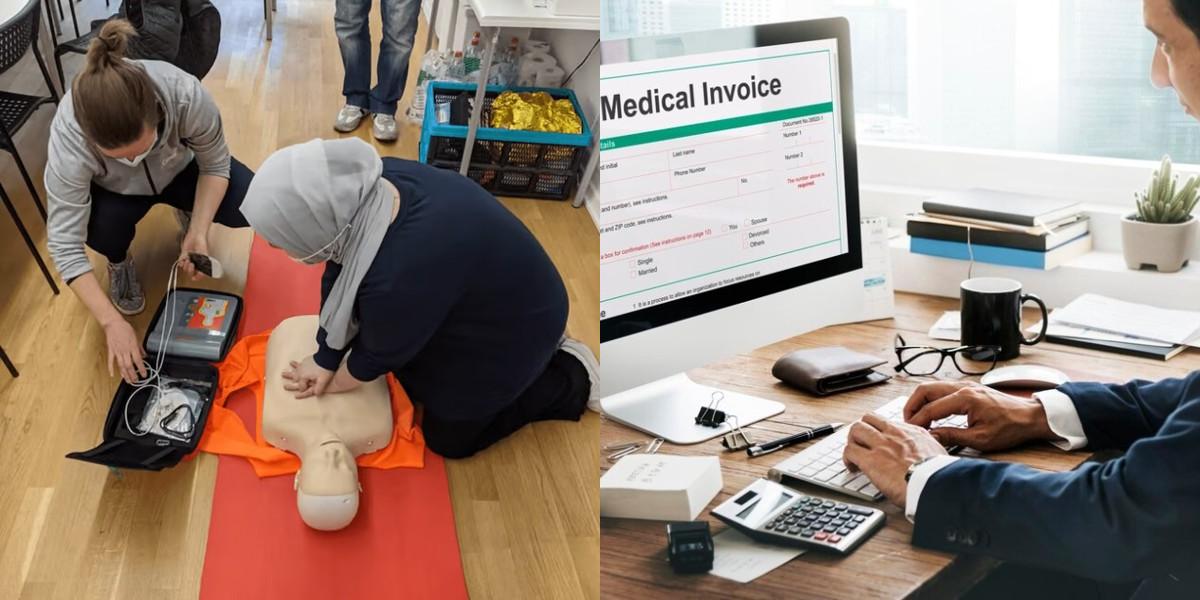CPR-BLS vs Medical Biller and Coder

Key Points:
- CPR-BLS providers perform emergency medical care; Medical Billers and Coders handle insurance claims and patient records.
- CPR-BLS jobs typically have lower pay, while Medical Billers and Coders can earn higher salaries.
- CPR-BLS jobs are more widely available, while Medical Billing and Coding jobs may be more specialized.
- CPR-BLS training is often shorter and can be done online, whereas Medical Billing and Coding usually requires in-person training.
- CPR-BLS training is generally less expensive and faster, while Medical Billing and Coding programs can be more costly and take longer.
The healthcare industry is a vast field with numerous career paths to choose from. Two popular options are becoming a CPR-BLS provider or a Medical Biller and Coder. While both professions are essential in the healthcare system, they require different skill sets and have unique responsibilities. In this blog post, we will compare and contrast these two career paths to help you decide which one may be the right fit for you.
CPR-BLS vs Medical Biller and Coder: Career Outlook and Salary
CPR-BLS Career Outlook and Salary:
- The demand for CPR-BLS providers is expected to grow due to the increasing need for emergency medical services.
- Job prospects are generally favorable, especially for those with additional certifications in advanced life support techniques.
- According to the Bureau of Labor Statistics (BLS), the median annual wage for emergency medical technicians (EMTs) and paramedics, which includes CPR-BLS providers, was $35,400 in May 2020.
Medical Biller and Coder Career Outlook and Salary:
- The demand for Medical Billers and Coders is also expected to grow, driven by the aging population and the need for accurate medical coding and billing.
- Job prospects are projected to be excellent, especially for certified professionals.
- According to the BLS, the median annual wage for medical records and health information technicians, which includes Medical Billers and Coders, was $44,090 in May 2020.
Final Thoughts
Choosing a career path in the healthcare industry can be a challenging decision. Both CPR-BLS and Medical Billing and Coding offer unique opportunities to contribute to the healthcare system. Consider your interests, skills, and long-term goals when making your decision. Whether you choose to become a CPR-BLS provider or a Medical Biller and Coder, both professions play vital roles in ensuring the health and well-being of patients.
Dreambound's programs are available in different places. Check these blogs for a good look at the two vocations, including what you need and tips on how to start:

Pia Yapjoco is part of the school growth and sales team at Dreambound. She helps facilitate school partnerships that expand educational opportunities for aspiring students in allied health and other trades. Beyond work, she curates her pup's Instagram, hunts for hidden coffee gems, and escapes into cozy gaming.



